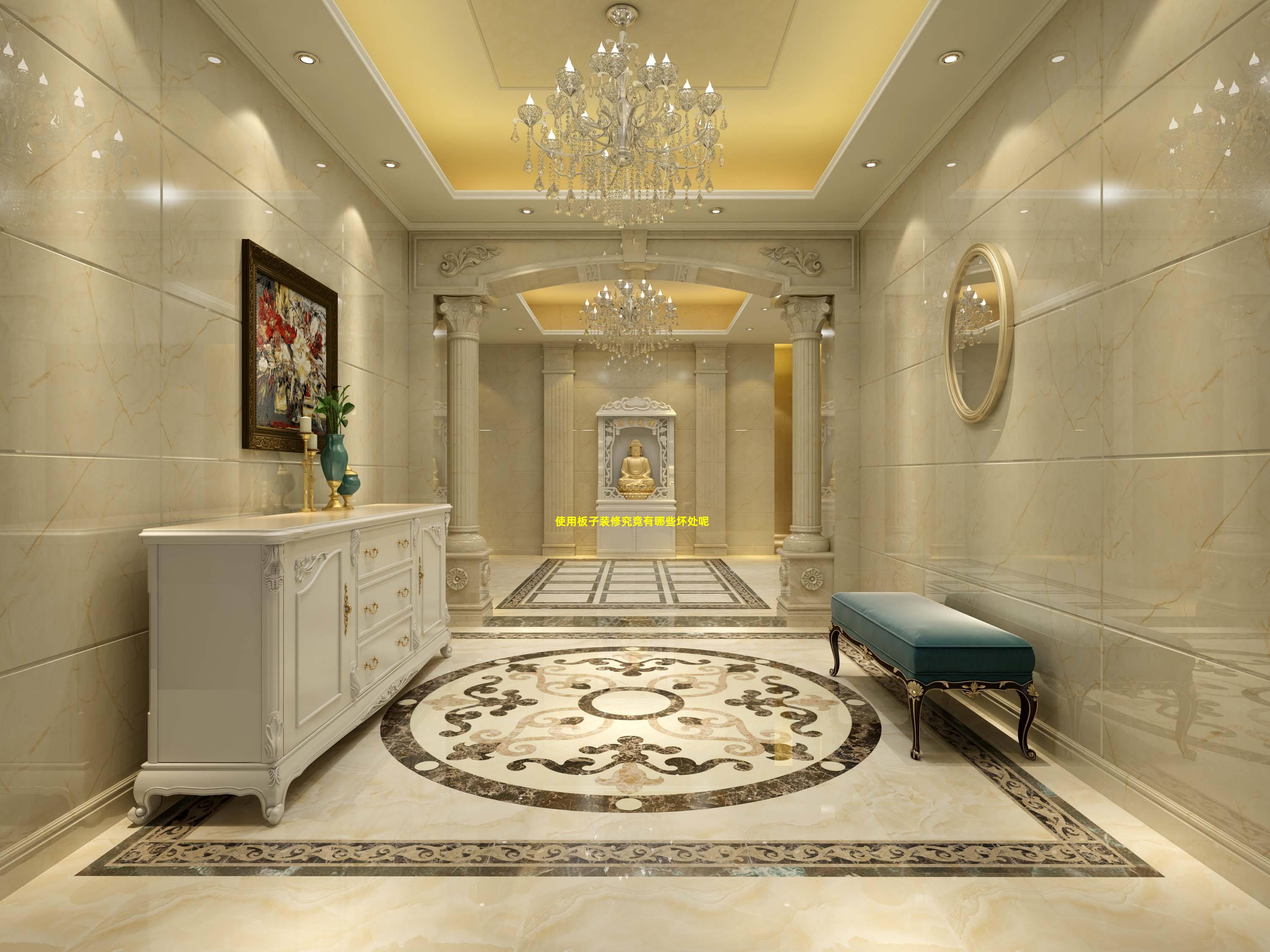





使用板材装修的坏处:
1. 甲醛释放:
许多板材中含有甲醛,这是一种有害气体,会对人体健康造成影响,包括呼吸道刺激、过敏和癌症。
2. 耐用性差:
板材的耐用性不如实木或其他天然材料。它们容易划伤、变形和开裂,尤其是在潮湿或高温的环境中。
3. 阻燃性差:
板材通常具有较差的阻燃性,在火灾中容易燃烧和释放有毒气体。
4. 隔音效果差:
板材的隔音效果不如实木或其他隔音材料。它们会让噪音更容易穿透墙壁和天花板。
5. 美观性有限:
板材通常具有单调的外观,缺乏实木或其他天然材料的纹理和质感。
6. 环保性差:
板材的生产过程会产生大量废料和污染物,对环境造成负面影响。
7. 维护成本高:
板材容易损坏,需要定期维护和更换,这会增加装修成本。
8. 影响室内空气质量:
板材中的甲醛和其他挥发性有机化合物 (VOC) 会释放到室内空气中,影响室内空气质量。
9. 容易滋生霉菌:
板材在潮湿的环境中容易滋生霉菌,这会对健康造成危害。
10. 价值低:
与实木或其他天然材料相比,板材的价值较低,在转售房屋时可能影响房屋价值。
Disadvantages of Using Drywall for Home Renovations
1. Susceptible to Damage: Drywall is a fragile material that can easily be damaged by impact, moisture, and temperature fluctuations. This makes it unsuitable for areas that experience high traffic or are prone to moisture, such as bathrooms and kitchens.
2. Difficult to Repair: Repairing drywall can be a timeconsuming and challenging process. Small holes or cracks can be patched, but larger damage may require replacing the entire panel. This can be especially problematic in areas with intricate designs or multiple layers of drywall.
3. Limited Design Options: Drywall is typically used to create flat, smooth surfaces. While it can be painted or textured to add some visual interest, it does not offer the same level of design flexibility as other materials, such as wood or tile.
4. Poor Sound Insulation: Drywall provides minimal sound insulation, which can be a concern in areas where privacy or noise reduction is desired. This can be particularly problematic in multifamily dwellings or homes located near noisy streets.
5. Fire Hazard: Drywall is a combustible material, meaning it can catch fire and spread flames. While it is often treated with fireresistant chemicals, it is not as fireresistant as other materials, such as concrete or brick.
6. Environmental Concerns: Drywall contains gypsum, which is a naturally occurring mineral. However, the mining and processing of gypsum can have negative environmental impacts, including air and water pollution.
7. Cost: Drywall can be a relatively expensive material, especially when compared to other options such as plaster or wood paneling. The cost of installation can also be significant, as it requires specialized tools and techniques.

使用板材装修的缺点:
1. 甲醛释放:
板材中含有甲醛,一种对人体有害的气体。
甲醛释放量过高会导致室内空气污染,引起呼吸道问题、头痛和过敏。
2. 耐用性差:
板材容易受潮、变形和开裂。
在潮湿环境中,板材容易发霉和腐烂。
3. 美观性有限:
板材表面通常是单调的,缺乏纹理和质感。
随着时间的推移,板材表面容易褪色和划伤。
4. 隔音效果差:
板材的隔音效果较差,容易产生噪音污染。
在公寓或多户住宅中,使用板材装修可能会影响邻居的安宁。
5. 阻燃性差:
板材的阻燃性较差,容易着火。
在火灾发生时,板材会释放大量有毒气体。
6. 环保性差:
板材的生产过程会产生大量废水和废气,对环境造成污染。
板材中的甲醛和挥发性有机化合物(VOC)也会对环境造成危害。
7. 成本高:
相比于其他装修材料,板材的成本较高。
由于板材的耐用性差,需要经常更换,这会增加装修成本。
8. 维护困难:
板材表面容易划伤和磨损。
清洁板材时需要使用特殊的清洁剂,否则容易损坏表面。
使用板材装修的缺点
1. 甲醛释放
板材中含有甲醛,是一种有害气体,会对人体健康造成危害。
甲醛释放量过高会导致头痛、恶心、呼吸道刺激等症状。
2. 耐用性差
板材的耐用性较差,容易受潮变形、开裂。
在潮湿的环境中,板材容易滋生霉菌,影响美观和健康。
3. 阻燃性差
板材的阻燃性较差,遇火容易燃烧,产生大量烟雾和有毒气体。
这会增加火灾风险,威胁人身安全。
4. 隔音效果差
板材的隔音效果较差,容易受到噪音干扰。
在隔音要求较高的环境中,使用板材装修会影响居住舒适度。
5. 环保性差
板材的生产过程中会产生大量废水和废气,对环境造成污染。
废弃的板材难以回收利用,会增加垃圾处理压力。
6. 美观性差
板材的纹理和颜色比较单一,美观性较差。
长时间使用后,板材容易褪色、变色,影响整体装修效果。
7. 价格昂贵
相比于其他装修材料,板材的价格相对昂贵。
大面积使用板材装修会增加装修成本。
8. 施工难度大
板材的施工难度较大,需要专业的技术和工具。
施工不当容易导致板材变形、开裂等问题。